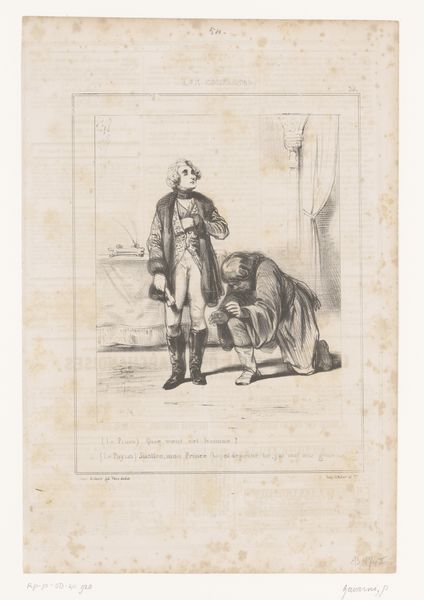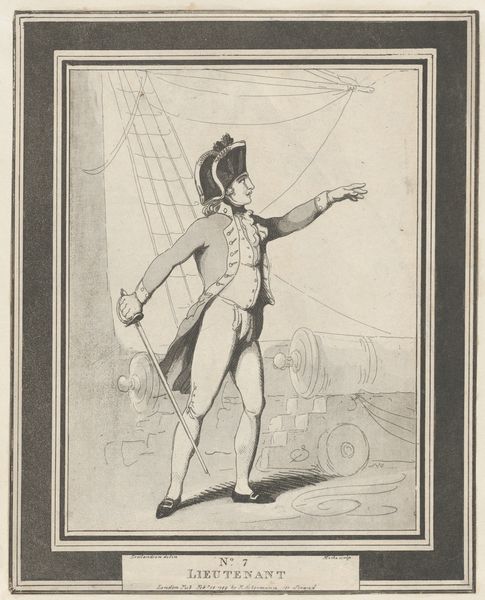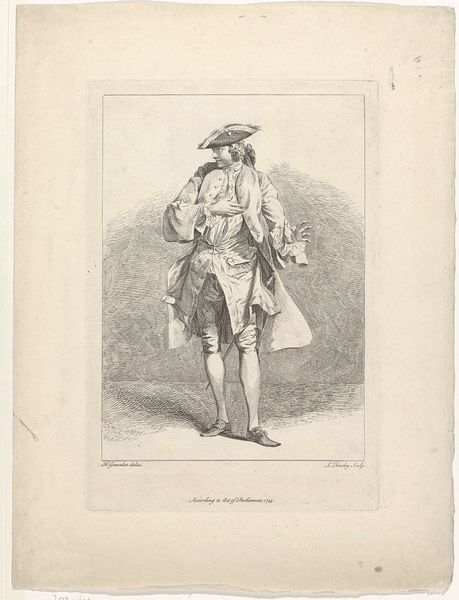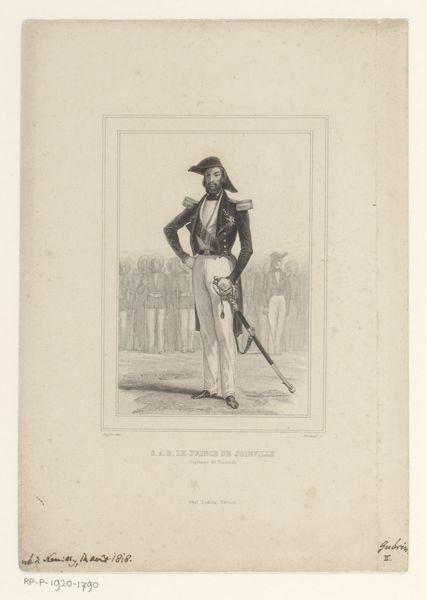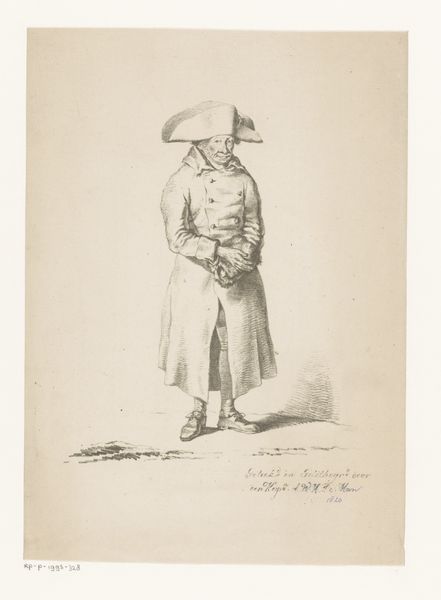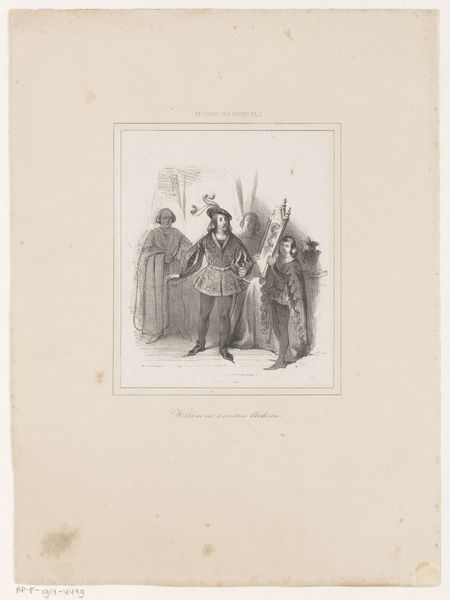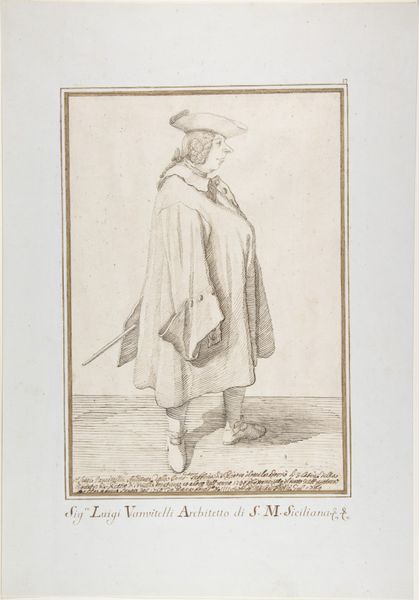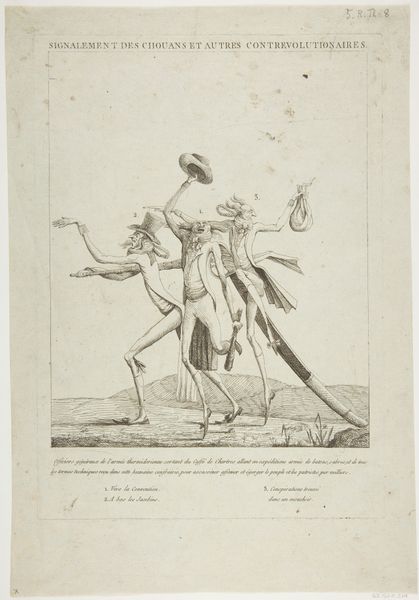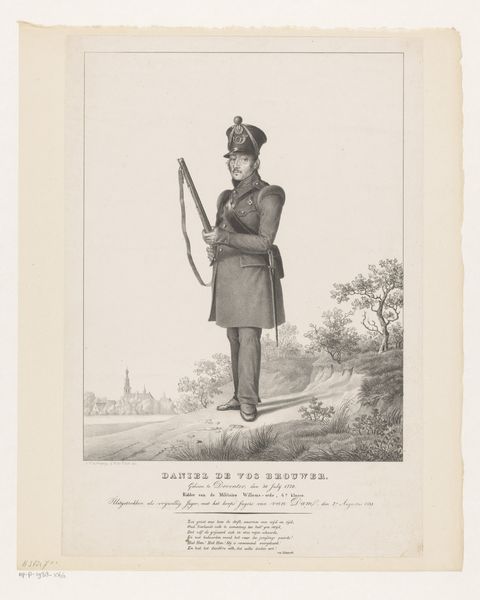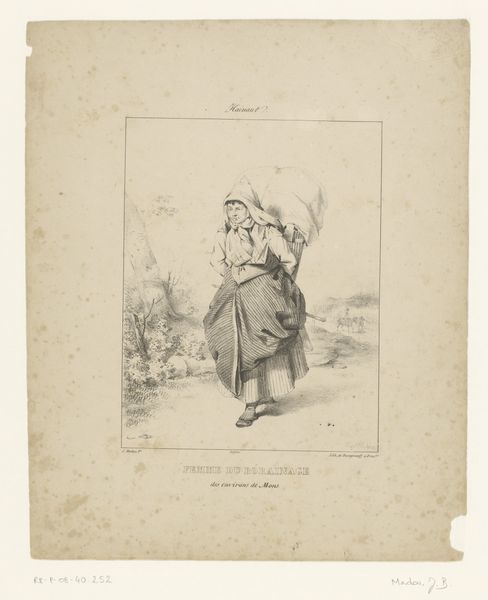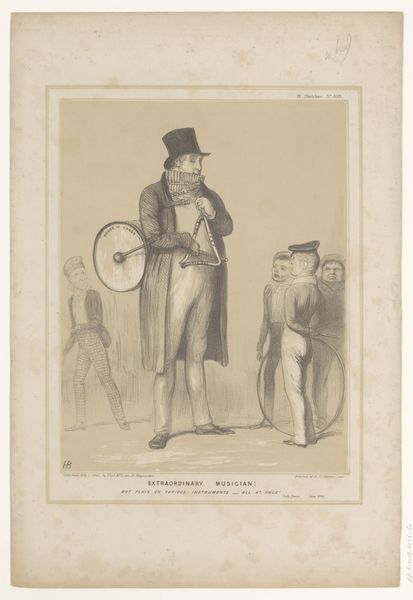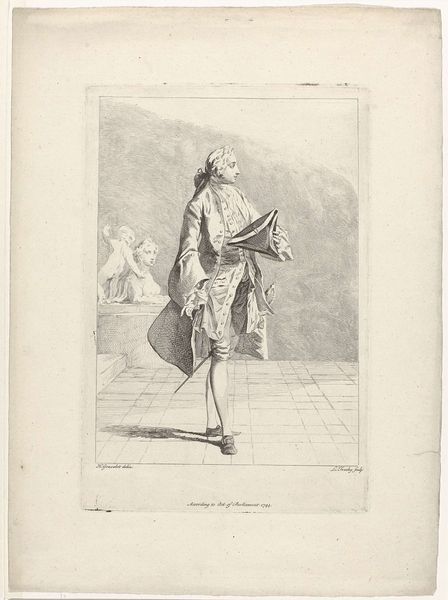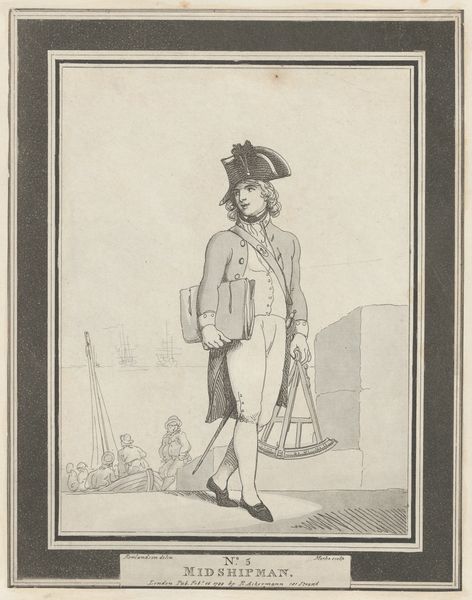
Straatverkoper verkoopt de ordonnanties van Mangin Possibly 1830 - 1838
0:00
0:00
alexandregabrieldecamps
Rijksmuseum
drawing, lithograph, print, ink
#
drawing
#
lithograph
# print
#
caricature
#
ink
#
romanticism
#
genre-painting
Dimensions: height 370 mm, width 262 mm
Copyright: Rijks Museum: Open Domain
Curator: Let’s consider this lithograph by Alexandre-Gabriel Decamps, possibly from between 1830 and 1838, entitled "Street Vendor Selling the Ordinances of Mangin." What strikes you initially? Editor: There's an immediate sense of disquiet and agitation in the scene. The frenetic energy, amplified by the angular lines and stark contrast, makes it appear almost theatrical, maybe a little ominous. Curator: Precisely. Decamps’ piece offers us a lens onto the sociopolitical landscape of that time. Mangin was the Paris police commissioner. This image, a caricature, depicts the hawking of his ordinances. What visual elements stand out to you in relation to this theme? Editor: The vendor’s exaggerated features—his almost manic expression, his spindly limbs, the way he’s grasping those papers… It speaks to desperation and possibly even mockery of authority. Then there’s the crowd in the background, rendered with swift strokes, suggesting both their involvement and perhaps a level of chaos. Curator: He does have a sort of almost devilish quality in his expressions, amplified with shadow and the dark rendering of his features and outfit. Note too the inscription in French along the bottom which speaks of the ordinances concerning those who have disrupted the streets, an issue that was agitating Paris at the time. How might these symbols shape the understanding of social unrest in that moment? Editor: Those sheets of ordinances act almost as emblems of oppression, amplified by his grotesque embodiment of its imposition. They are highlighted for our gaze in a time where new societal orders could shift at any moment, perhaps contributing to both fear and defiance. The very act of selling, of popularizing them, makes the scene all the more potent, I would say. Curator: Indeed. The way he makes his body a spectacle can certainly be interpreted as the artist critiquing such authoritative gestures. Overall, it provides insightful commentary on a society struggling with issues of power, control and societal upset. Editor: This work encourages a richer comprehension of France through potent visual imagery—we have this vendor as an enduring figure within a changing political landscape.
Comments
No comments
Be the first to comment and join the conversation on the ultimate creative platform.
